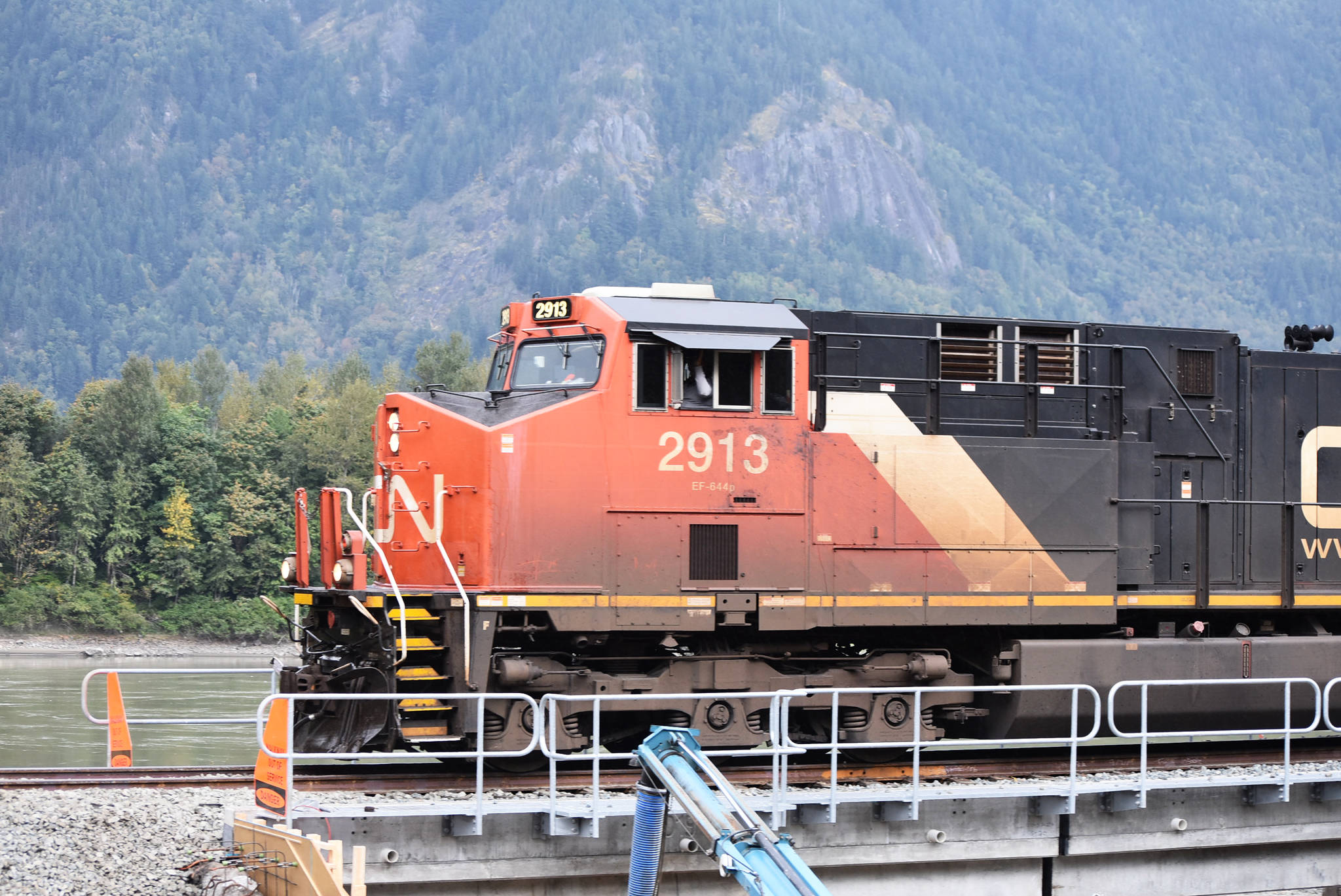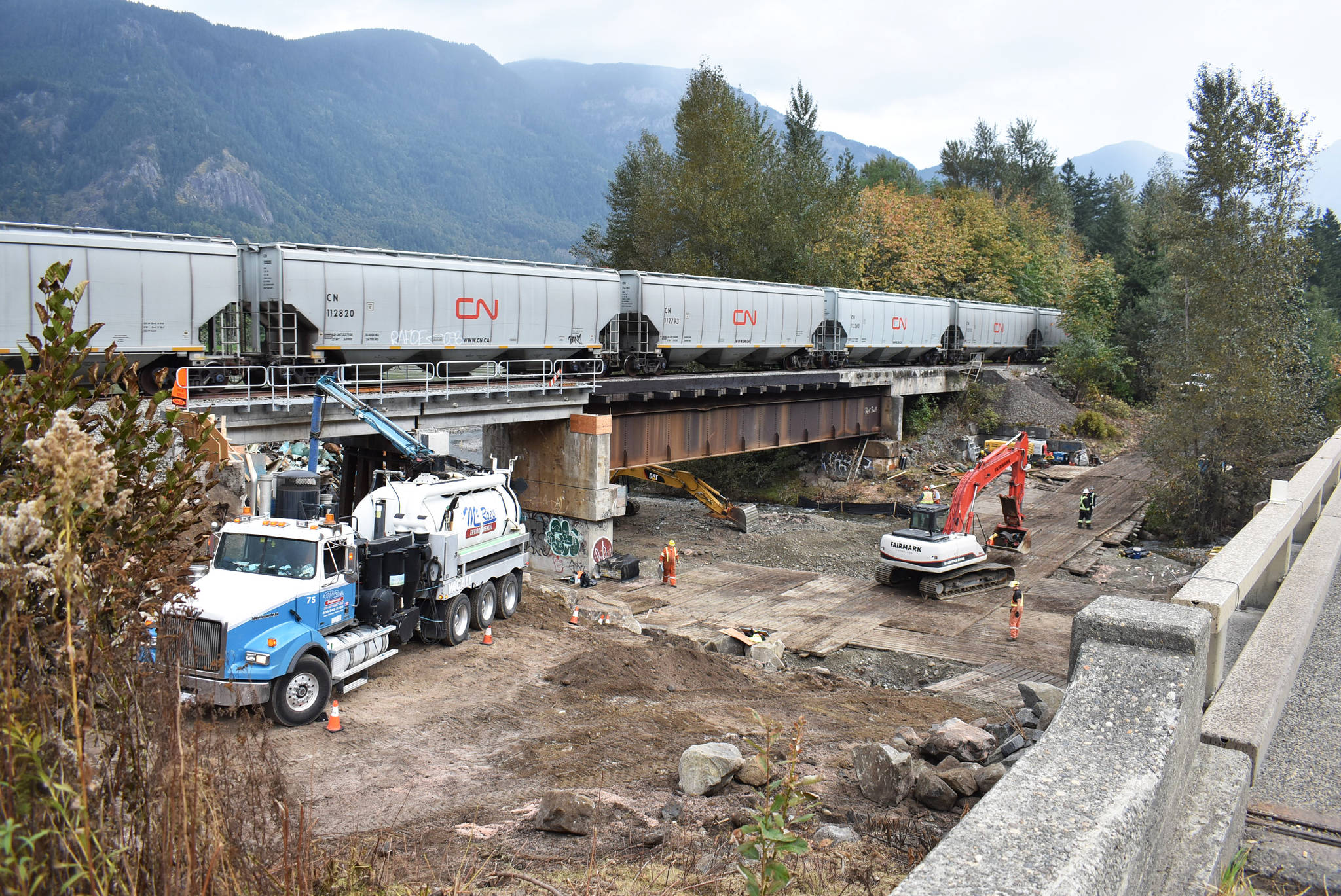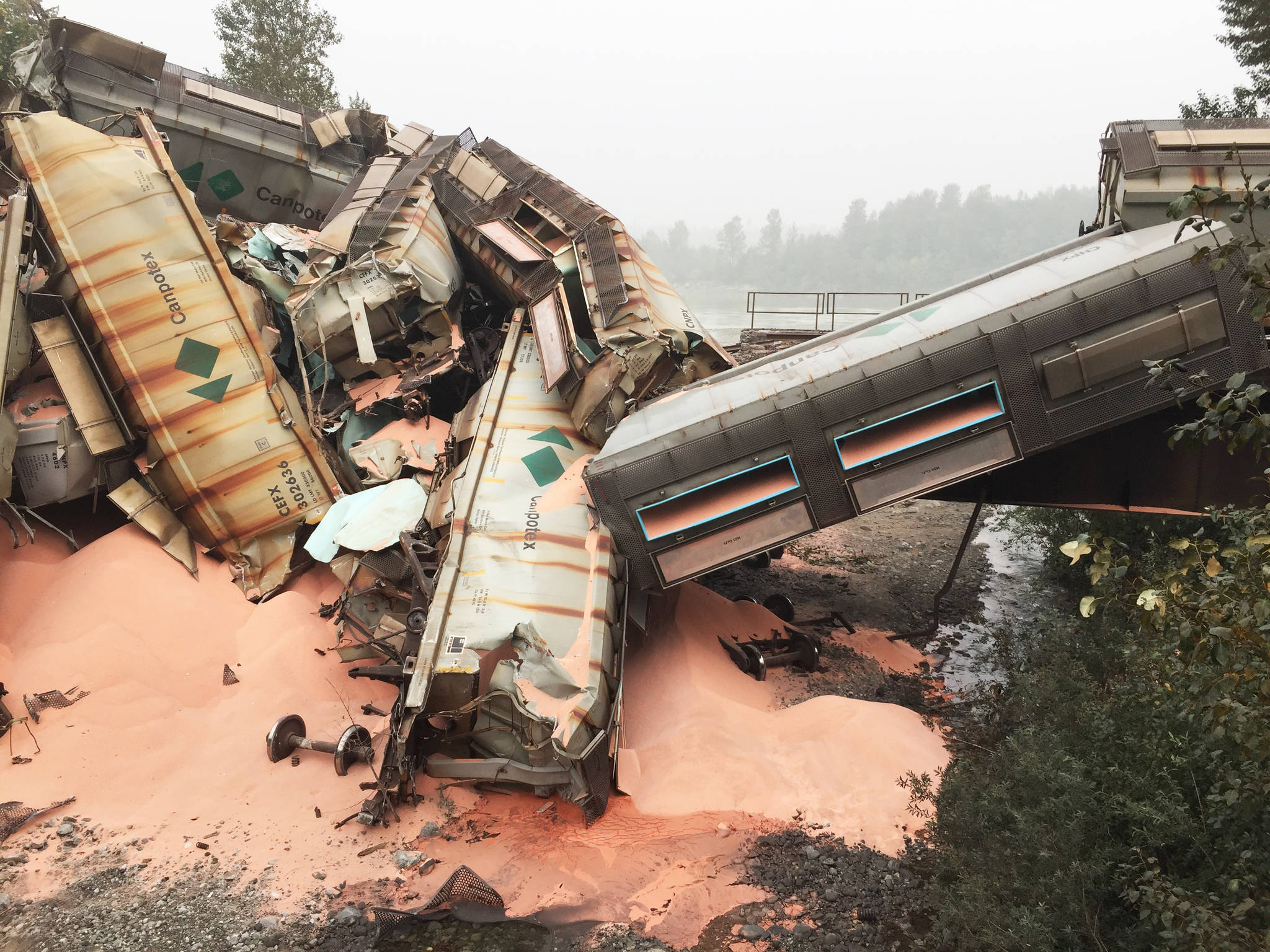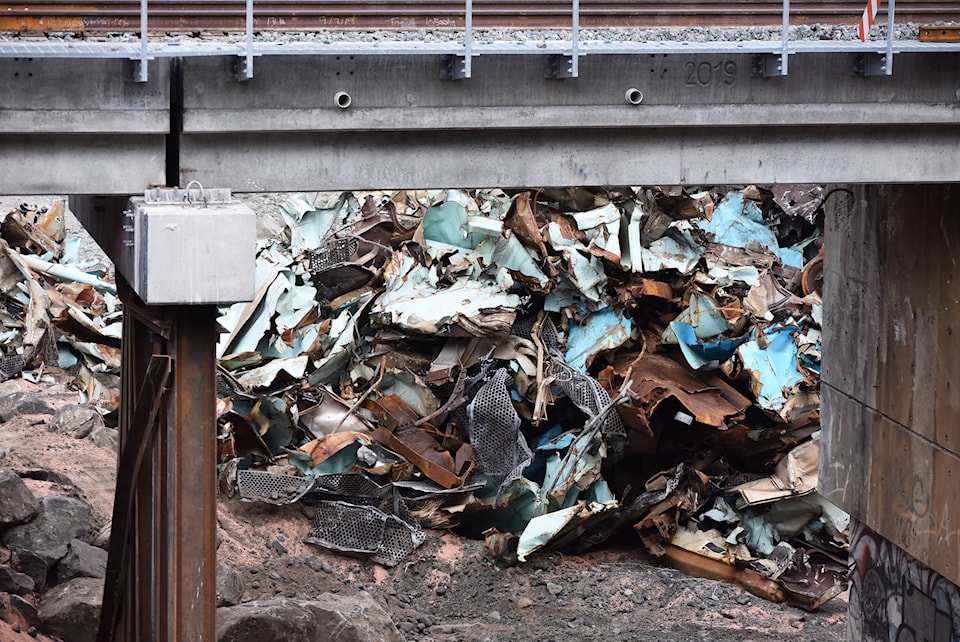Clean up efforts are ongoing and trains are again running along the CN track near Hope, after a large-scale derailment Sept. 14 halted traffic for days.
Around 60 cars were involved in the derailment, which occurred on a rail bridge west of Hope near Highway 1 in the early hours of Monday, Sept. 14.
The crash sent 60 of the 200 cars on a CP train carrying potash crashing into one another. Some cars crashed into an ‘adjacent body of water’ CN stated and a portion of the rail bridge appeared to be damaged. The crash occured above Hunter Creek, which shortly past the rail bridge feeds into the Fraser River.
A large scale clean up operation began later that day and continued this week, with crews removing wrecked train cars, vacuuming up spilled potash and repairing the rail bridge. By the morning of Sept.17, trains were once again running.
B.C.’s Ministry of Environment and Climate Change Strategy, in a Sept. 16 update on the spill response, stated sediment fencing and a containment boom are being installed. Plans for water sampling have also been developed.
According to information from Emergency Management BC (EMBC), material from the derailment drifted down Hunter Creek and pooled at the mouth of the Fraser River.
By Sept. 15, EMBC stated that potash had been removed from the sides of the creek bed and there was no remaining risk of the product entering the creek.
“The remaining product in the water will dissolve and does not present a threat to aquatic life in the existing concentrations and is not toxic to humans at this concentration either,” according to an email from EMBC shared with the Hope Standard.
Potash, the common name for a group of minerals and chemicals containing potassium, is used primarily in the production of fertilizer. Canada has the world’s second largest reserves of potash, and is also the world’s largest producer and exporter of the substance according to Natural Resources Canada.
Multiple agencies are involved in the clean up effort, including Fisheries and Oceans Canada. “It is not clear yet if this incident has any immediate or direct impact on migrating fish but spawning sturgeon habitat is nearby and, as more information comes in, the situation will be assessed further,” spokesperson Leri Davies stated Sept. 15.
Engagement with First Nations and “local stakeholders” about the clean up will continue, a spokesperson with CN Rail stated.
The cause of the derailment is still under investigation, with the Transportation Safety Board of Canada having deployed to the site Sept. 14.
Do you have something to add to this story, or something else we should report on? Email:
emelie.peacock@hopestandard.com
Facebook and follow us on Twitter



